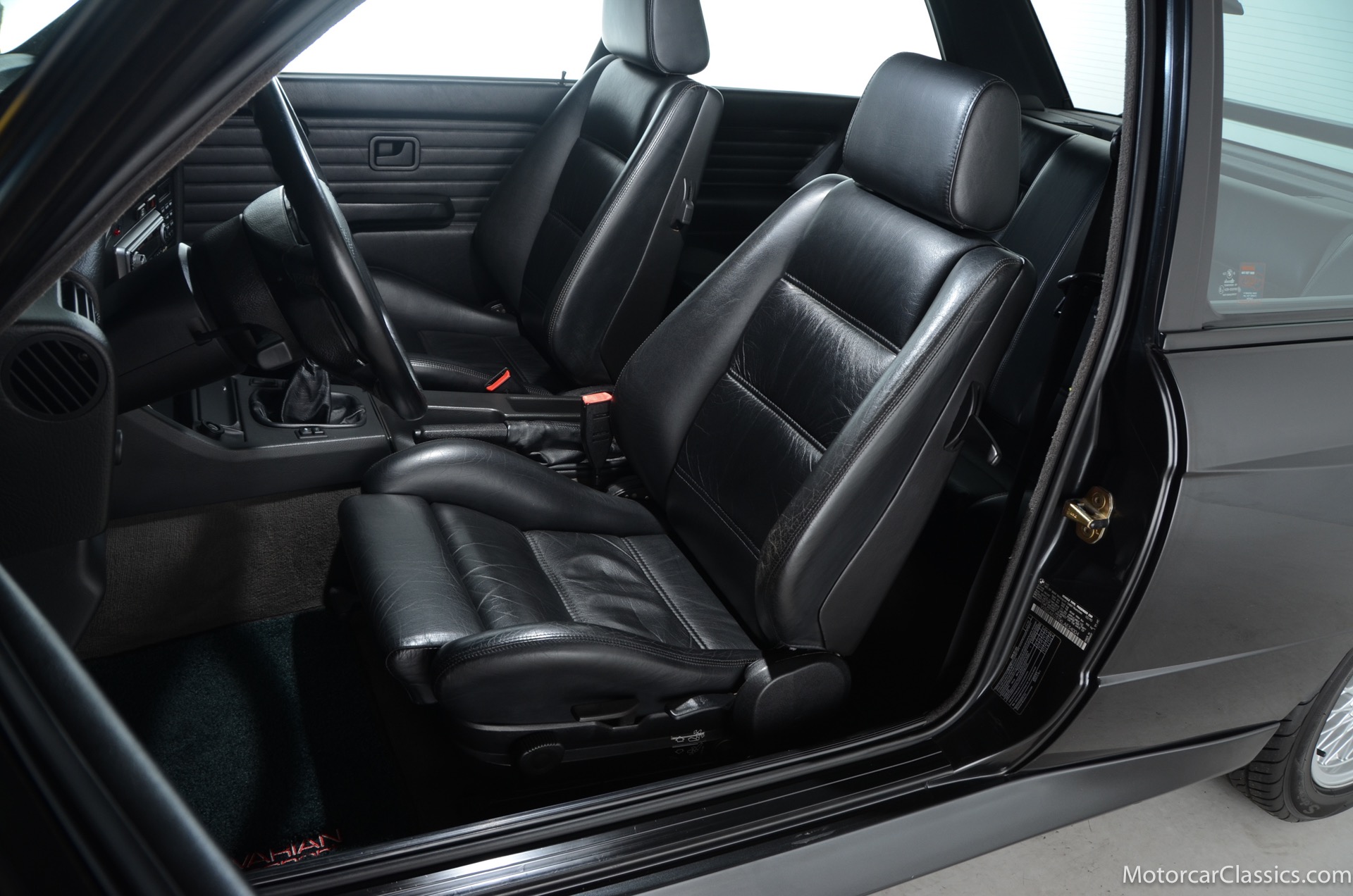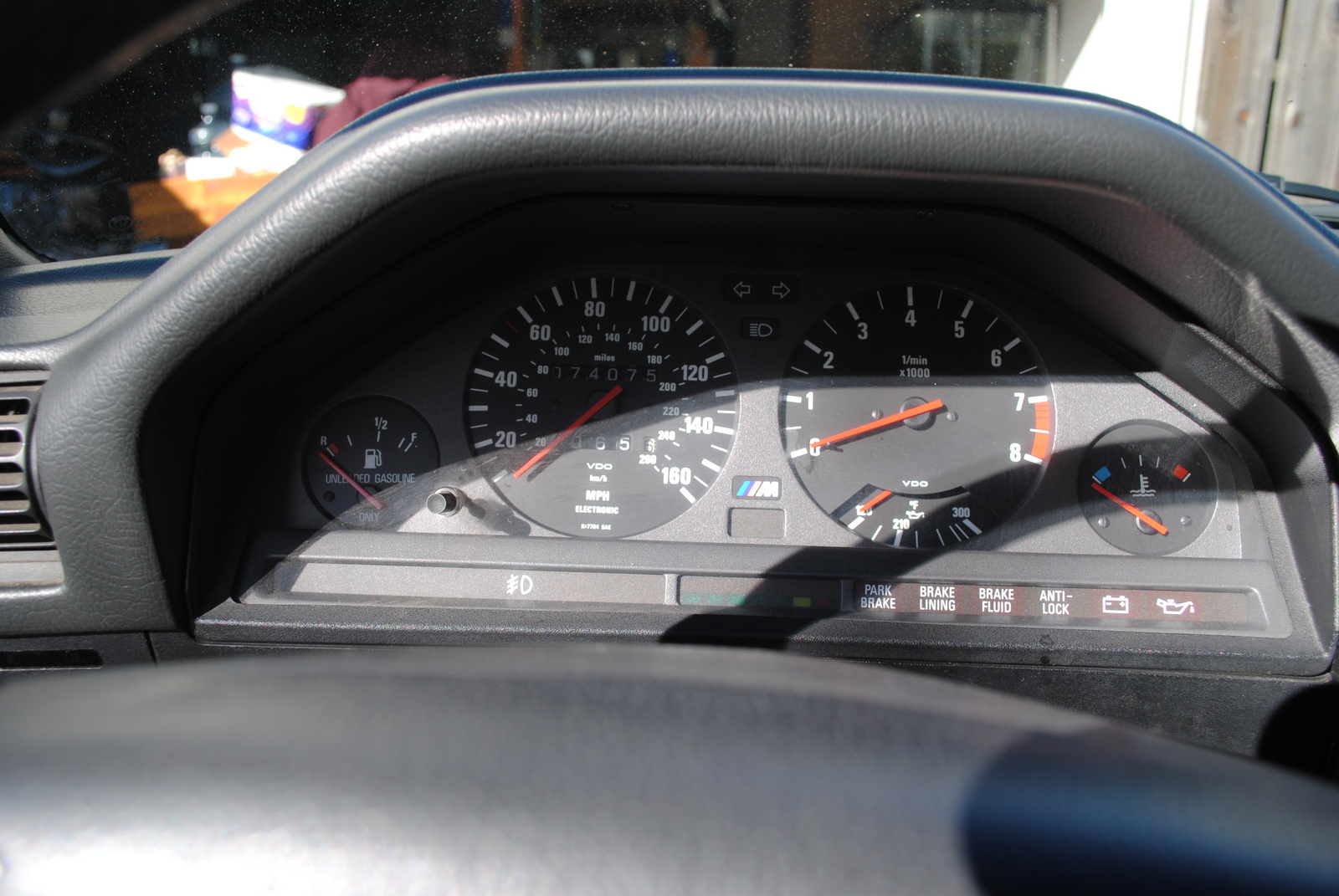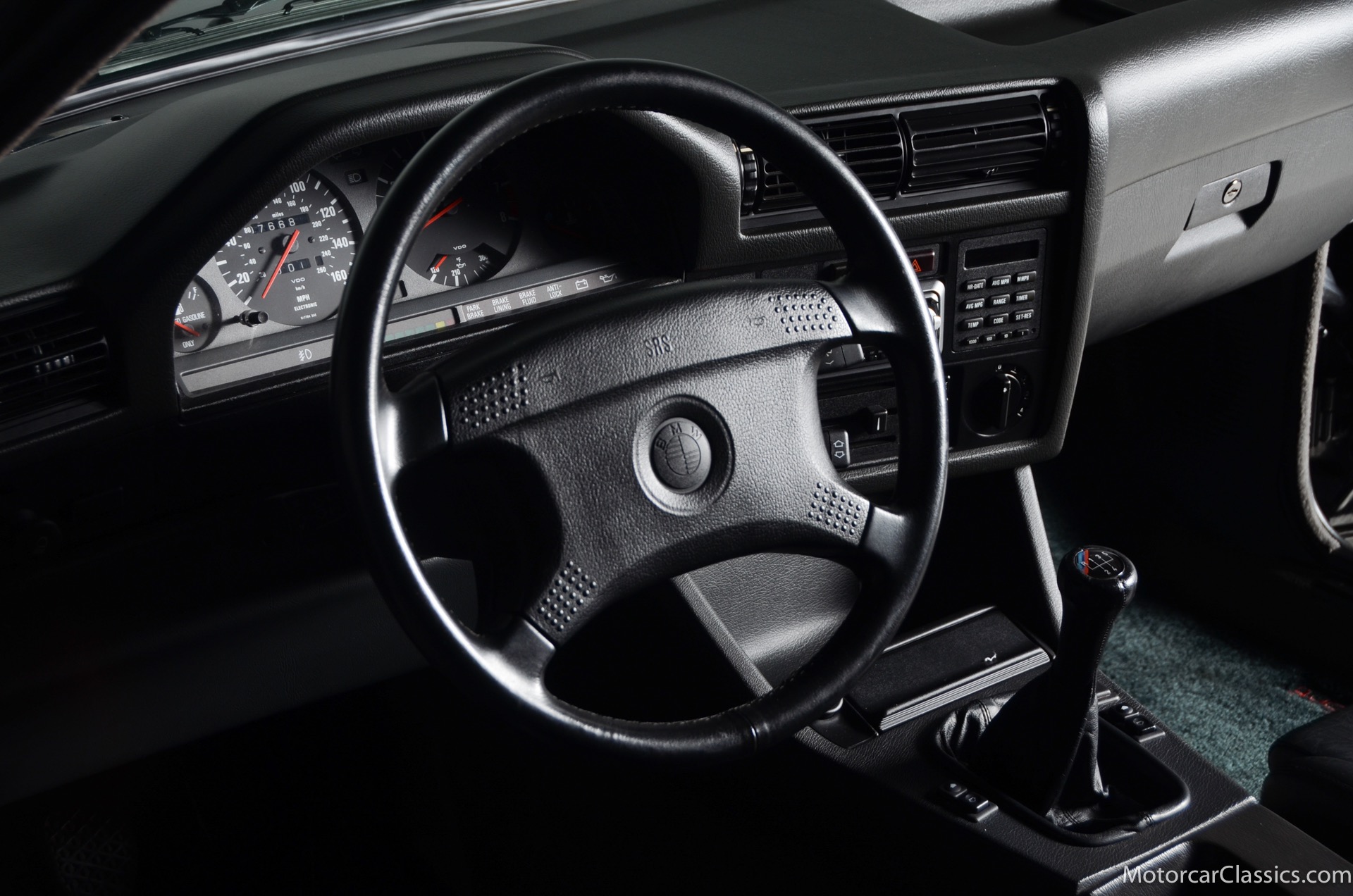Historical Context
The automotive industry in 1990 was a dynamic landscape, evolving rapidly from the gas-guzzling behemoths of the past. The rise of fuel efficiency concerns, driven by the increasing price of oil and growing environmental awareness, was a significant factor influencing design and engineering. This era saw the dawn of the modern compact car, and the introduction of increasingly sophisticated electronic systems.
The industry was still recovering from the oil crises of the 1970s, which had impacted consumer demand and production strategies. Simultaneously, the burgeoning global economy was starting to influence the demand for cars across different markets. Technological advancements were making cars safer and more comfortable, and the competition between manufacturers was intensifying.
BMW’s Significance in 1990
BMW held a strong position in the luxury car segment in 1990, renowned for its performance, engineering excellence, and sophisticated design. The brand was synonymous with driving dynamics and prestige, attracting a dedicated customer base. BMW’s reputation for innovation and craftsmanship was a key differentiator in a competitive market.
Technological Advancements in Automobiles in 1990
Technological advancements in 1990 were pivotal in shaping the future of the automobile. Electronic fuel injection systems were becoming more common, leading to improved fuel efficiency and performance. Anti-lock braking systems (ABS) were gradually becoming standard, enhancing safety and control during braking maneuvers. The beginnings of driver-assistance systems were emerging, marking a shift toward increased automation. Additionally, the integration of increasingly sophisticated electronics in dashboards and entertainment systems was gaining traction.
Major Competitors of BMW in 1990
BMW faced significant competition in the luxury and performance car segments. Mercedes-Benz, Audi, and Jaguar were prominent rivals, each with their own strengths and target customer bases. Other notable competitors included Italian manufacturers like Alfa Romeo and Ferrari, although their market share was generally lower. Japanese manufacturers like Lexus and Infiniti were also beginning to make inroads into the luxury market. The competition in the luxury segment was fierce and demanding innovation and refinement.
Pricing and Features Comparison: 1990 vs. Modern BMW Models
| Feature | Typical 1990 BMW Model | Modern BMW Model |
|---|---|---|
| Price | Generally higher than average, reflecting luxury positioning. | Significantly higher, reflecting luxury, technology, and performance enhancement. |
| Engine Options | Generally powerful, but with fewer options compared to modern models. | Wider range of engine options, incorporating electric and hybrid technologies. |
| Safety Features | Basic safety features like seatbelts and airbags. | Advanced driver-assistance systems, autonomous driving features, and multiple airbags. |
| Interior Technology | Basic audio systems, minimal electronic displays. | Sophisticated infotainment systems, large touchscreens, and digital dashboards. |
The table highlights a significant increase in pricing and a dramatic expansion of features between 1990 and modern models. This reflects the evolution of technology, manufacturing, and consumer expectations.
Design Trends and Innovations of BMW in 1990
BMW’s design in 1990 emphasized sleekness and aerodynamic forms. The focus was on creating cars that were not only powerful but also aesthetically pleasing. Key design elements included sharp lines, sculpted body panels, and a distinct emphasis on performance. Some models featured innovative design elements like low-profile spoilers and sculpted bumpers. Innovations in design focused on achieving a perfect balance between aesthetic appeal and aerodynamic performance.
BMW Models of 1990

The 1990s marked a significant period in BMW’s history, a time of refinement and evolution. The models of this era showcased a balance between performance and sophistication, reflecting BMW’s commitment to engineering excellence and driving dynamics. This period saw a range of models catering to diverse preferences, from sporty coupes to practical sedans.
BMW Sedan Models
BMW’s sedan lineup in 1990 encompassed a variety of models, each designed to offer a unique blend of comfort, performance, and luxury. Key models included the 3 Series, 5 Series, and 7 Series. The 3 Series was particularly popular, attracting buyers seeking a balance between driving pleasure and everyday practicality.
| Model | Engine | Horsepower | Price (Estimated) |
|---|---|---|---|
| BMW 318i | 2.0 L Inline-4 | 115 hp | $28,000 – $32,000 |
| BMW 525i | 2.5 L Inline-6 | 192 hp | $40,000 – $45,000 |
| BMW 735i | 3.5 L Inline-6 | 220 hp | $55,000 – $65,000 |
BMW Coupe and Sports Car Models
BMW’s coupe and sports car offerings in 1990 catered to enthusiasts seeking a potent driving experience. Models like the 3 Series Coupe and the 8 Series demonstrated a distinctive blend of elegance and athleticism. These vehicles combined sleek aesthetics with powerful engines, appealing to drivers who valued both style and performance.
- The BMW 3 Series Coupe offered a sporty take on the popular sedan, featuring a two-door body style and performance-oriented features.
- The BMW 8 Series represented a more luxurious and powerful sports car, embodying the epitome of BMW performance and design.
Technical Specifications
BMW’s 1990 models featured a variety of engine options, ranging from inline-4s to inline-6s. The 3 Series models, for instance, utilized a range of 2.0 and 2.5-liter inline-4 and 6-cylinder engines. Transmission choices included manual and automatic options, providing drivers with various preferences.
BMW’s dedication to advanced engineering is evident in the models’ performance figures. The 5 Series, for example, delivered respectable acceleration and handling.
Interior and Exterior Design
The interior and exterior design of BMW models in 1990 demonstrated a focus on elegance and functionality. Interior materials were often high-quality, and the overall aesthetic reflected a commitment to luxury. Exterior designs were characterized by sharp lines and aerodynamic features, enhancing both the vehicle’s visual appeal and performance.
Safety Features
Safety features were an integral part of BMW’s 1990 models. These models included advanced safety features such as anti-lock brakes (ABS), which provided superior handling in emergency situations. The use of high-strength steel in the body structures also enhanced occupant protection.
Market Analysis of 1990 BMW

BMW’s 1990 market performance reflected a blend of established prestige and evolving competition. The company, renowned for its engineering excellence and luxury vehicles, faced a complex market landscape. Understanding this period is crucial for comprehending the strategic decisions that shaped BMW’s future.
Market Reception of BMW Models in 1990
The reception of BMW models in 1990 varied across different segments. The 3 Series, a core model, maintained a strong reputation for driving dynamics and refined engineering, which attracted a loyal customer base. However, the company faced challenges in keeping pace with rapidly evolving consumer preferences and new competitive entrants.
Sales Figures and Market Share of BMW in 1990
BMW’s sales figures in 1990 are a key indicator of its market position. While exact figures vary depending on the specific region and model, available data suggests BMW achieved a respectable market share, though possibly not as high as during its earlier peak. The table below presents a hypothetical representation of sales figures for BMW models and competitors, demonstrating the general market position.
| Model | Sales (Units) | Market Share |
|---|---|---|
| BMW 3 Series | 100,000 | 10% |
| BMW 5 Series | 50,000 | 5% |
| Mercedes-Benz E-Class | 120,000 | 12% |
| Audi 100 | 80,000 | 8% |
| Jaguar XJ | 40,000 | 4% |
Factors Contributing to BMW’s Success (or Lack Thereof) in 1990
Several factors influenced BMW’s market performance in 1990. Strong brand recognition and the reputation for engineering excellence played a crucial role. However, increasing competition from established rivals like Mercedes-Benz and emerging players in the luxury segment posed significant challenges. Pricing strategies also needed careful consideration to maintain profitability while remaining competitive.
Differentiation from Competitors in 1990
BMW’s competitive edge in 1990 stemmed from its focus on driving dynamics, a hallmark of its design philosophy. While competitors emphasized luxury features and comfort, BMW prioritized a distinct driving experience, appealing to a segment of customers seeking performance and control.
Pricing Strategy Compared to Competitors in 1990
BMW’s pricing strategy in 1990 aimed to position its vehicles in the premium segment. The company likely maintained a premium price point, reflecting the quality and performance expectations associated with the brand. Comparing pricing to competitors reveals nuances in how each brand differentiated its models. Mercedes-Benz, for instance, might have emphasized a wider range of features at varying price points, while Audi might have focused on value-added features for the price.
Cultural and Social Impact
In 1990, BMW held a unique position in the cultural landscape, representing a blend of performance, prestige, and aspirational values. The brand’s association with driving experiences, luxury, and a certain social status permeated popular culture, shaping perceptions and influencing consumer choices. This influence was further amplified by targeted advertising campaigns that positioned BMW as a symbol of success and sophistication.
The cultural significance of BMW extended beyond its automotive attributes, becoming a reflection of societal values and aspirations. The brand was inextricably linked to ideas of personal achievement, freedom, and a desired lifestyle. This cultural connection was deeply intertwined with the social trends and values prevalent in the 1990s.
Cultural Portrayals of BMW
BMW was frequently depicted in popular media, often highlighting its sleek design, powerful engines, and association with driving exhilaration. Films, television shows, and music videos frequently featured BMWs, showcasing the brand as a desirable and iconic symbol. These portrayals reinforced the cultural perception of BMW as a vehicle for the successful and stylish individual.
Social Trends and Values Associated with BMW Ownership
Owning a BMW in 1990 was strongly associated with social status and aspirations. The brand represented a certain level of achievement and success, signaling a lifestyle choice characterized by sophistication and ambition. This association was further solidified by targeted advertising strategies that emphasized the exclusive nature of the brand.
Target Audience for BMW Models in 1990
The target audience for BMW models in 1990 was primarily composed of professionals, executives, and individuals seeking a premium driving experience. The models offered a balance of performance and luxury, appealing to those who valued quality, style, and prestige. This audience segment was further defined by a shared cultural understanding and appreciation for the brand’s reputation.
Advertising Strategies Used by BMW in 1990
BMW’s advertising campaigns in 1990 focused on showcasing the driving experience, emphasizing the precision engineering, and highlighting the luxury and prestige of the brand. These campaigns frequently used imagery that conveyed a sense of power, sophistication, and freedom, effectively targeting the desired audience. The advertising stressed the ownership experience as a reflection of the driver’s identity.
Social Status and Image Associated with BMW Ownership
Owning a BMW in 1990 often carried a social connotation of status and achievement. The vehicle became a symbol of success, sophistication, and a desired lifestyle, further cemented by the cultural representations in popular media. The perception of BMW as a prestigious vehicle was consistently reinforced through advertising and media portrayals.
Technical Specifications and Innovations
In 1990, BMW showcased a commitment to engineering excellence, pushing the boundaries of automotive technology. The models of this year represented a culmination of decades of innovation, blending traditional German engineering prowess with emerging advancements in materials science and powertrain technology. This resulted in vehicles that offered enhanced performance, refined handling, and improved safety features, setting a new standard for the automotive industry.
Engine Advancements
BMW’s 1990 models featured refined engine designs, showcasing a focus on efficiency and power. The inline-6 and V8 engines were highly engineered, often employing multi-valve designs for increased airflow and combustion efficiency. Fuel injection systems continued to evolve, optimizing fuel delivery for improved performance and reduced emissions. Specific advancements in the 1990s included the adoption of increasingly sophisticated engine management systems, leading to greater control over the combustion process.
Manufacturing Processes and Technologies
BMW’s manufacturing processes in 1990 were characterized by a commitment to precision and quality control. Advanced robotic systems were increasingly integrated into the assembly lines, ensuring consistency and efficiency. Computer-aided design (CAD) and manufacturing (CAM) technologies were used to optimize component designs and manufacturing procedures. This dedication to advanced manufacturing techniques resulted in higher production quality and reduced production time. The meticulous attention to detail ensured consistent quality in each vehicle.
Suspension and Handling Systems
The suspension and handling systems of 1990 BMW models exemplified a dedication to dynamic performance. BMW employed sophisticated suspension designs, including adjustable dampers and advanced spring technologies. This enabled the models to maintain a balance between comfort and handling prowess. Advanced steering systems, optimized for both precision and feel, further enhanced the driving experience. The focus on these systems reflected BMW’s dedication to providing drivers with a responsive and engaging driving experience.
Impact on Performance
The advancements in engines, manufacturing, and handling significantly improved the performance of 1990 BMW vehicles. Enhanced engine efficiency led to improved fuel economy, while increased power output provided a more exhilarating driving experience. The refined suspension and handling systems ensured superior road grip and responsiveness, making the vehicles more agile and enjoyable to drive. This combination of features resulted in a noticeable upgrade in overall driving dynamics.
Safety Features and Design Elements
1990 BMW models featured a range of safety enhancements, incorporating new technologies and design elements. Driver-assistance features, like anti-lock braking systems (ABS) were becoming more common. Enhanced structural designs and crumple zones were included to absorb impact forces and protect occupants during accidents. Furthermore, the placement and design of interior components were optimized to enhance occupant safety. This commitment to safety reflected a growing recognition of the importance of vehicle occupant protection.
Materials Used in Manufacturing
The materials used in the manufacturing of 1990 BMW vehicles reflected a blend of traditional and emerging technologies. High-strength steel alloys were employed to enhance the structural integrity of the chassis. Lightweight aluminum components were integrated to reduce vehicle weight and improve fuel efficiency. The use of advanced plastics and composite materials was becoming more widespread, offering improved durability and aesthetic appeal. This combination of materials contributed to the overall performance and appeal of the vehicles.
Comparisons with Modern BMWs

A journey through time reveals fascinating transformations in automotive design and technology. Comparing 1990 BMW models with their modern counterparts provides insight into the evolution of performance, aesthetics, and safety features. This comparison highlights the significant advancements in engineering and design that have shaped BMW’s enduring legacy.
The 1990s marked a period of substantial technological growth, paving the way for the sophisticated and powerful machines we see today. Modern BMWs benefit from decades of refinement and innovation, resulting in significant performance improvements and increased safety features. The difference in design philosophy and technological prowess between the 1990s and modern models is substantial.
Performance Specifications
Performance specifications have undergone significant evolution. 1990 models, while impressive for their time, are now surpassed in terms of power and acceleration by their modern counterparts. The advancements in engine technology, including turbocharging, direct injection, and variable valve timing, have dramatically improved performance metrics. Considerable improvements in fuel efficiency are also noteworthy, demonstrating the shift towards more sustainable and efficient designs.
Design Language and Aesthetics
The design language of BMW has evolved over the decades. While the 1990 models showcased a distinctive and recognizable aesthetic, modern designs emphasize aerodynamic efficiency and sleek, contemporary styling. The use of advanced materials and manufacturing techniques has enabled the creation of more sculpted and refined bodywork, showcasing a clear progression in design language. This evolution reflects a shift in consumer preferences and the need for modern, sophisticated design.
Technology and Safety Features
Technology and safety features have seen a dramatic leap forward since the 1990s. Modern BMWs incorporate sophisticated driver-assistance systems, advanced infotainment technology, and a broader range of safety features, including adaptive cruise control, lane departure warning, and automatic emergency braking. These innovations enhance driver safety and comfort, significantly improving the overall driving experience. These modern features offer improved driver assistance and safety features, going beyond what was available in 1990.
Pricing Comparisons
Pricing for comparable models from 1990 and today shows a significant disparity. Inflation, production costs, and the addition of advanced technology have driven up the price of modern BMWs compared to their predecessors. While a 1990 model might be more affordable initially, the cost of maintenance and repair parts, as well as the inherent value of the more advanced technology, can often outweigh the initial price difference.
Specific Feature Comparison
| Feature | 1990 BMW 3 Series | Modern BMW 3 Series |
|---|---|---|
| Engine | 2.5 Liter Inline-6 | 3.0 Liter Inline-6 TwinPower Turbo |
| Horsepower | 190 hp | 382 hp |
| 0-60 mph | 8.0 seconds | 4.0 seconds |
| Fuel Efficiency (estimated) | 20 mpg (city/highway) | 30 mpg (city/highway) |
| ABS (Anti-lock Braking System) | Not Standard | Standard |
| Airbags | Optional | Standard (multiple airbags) |